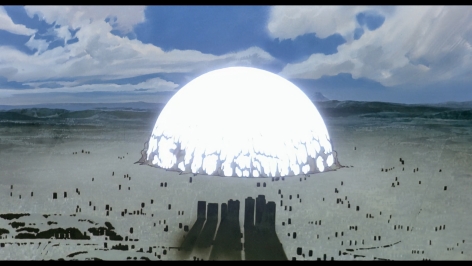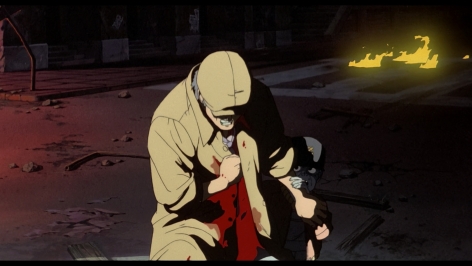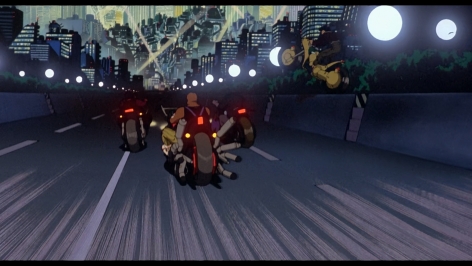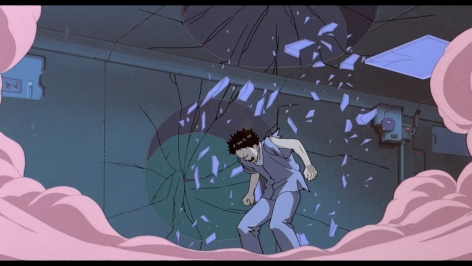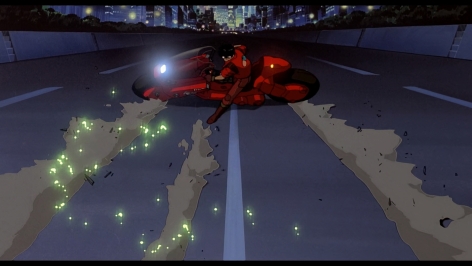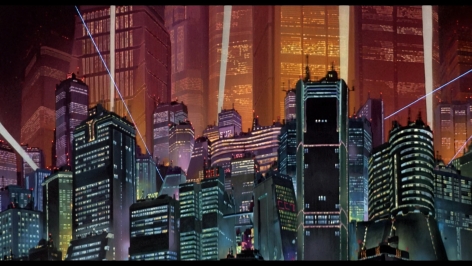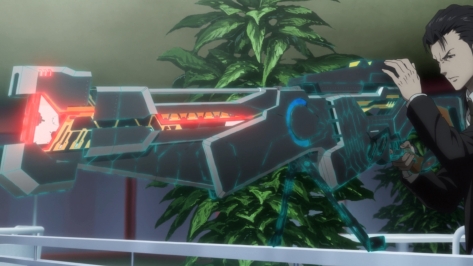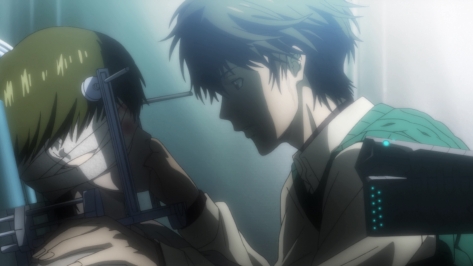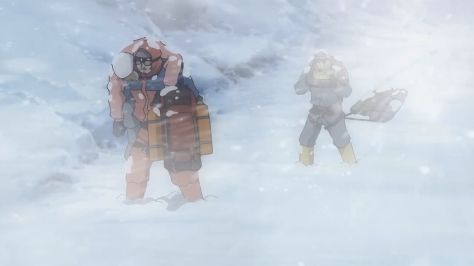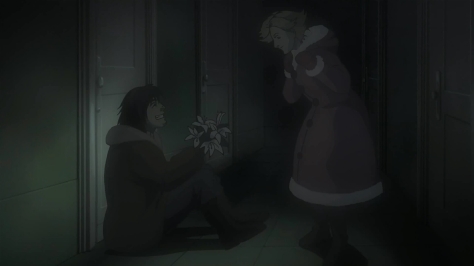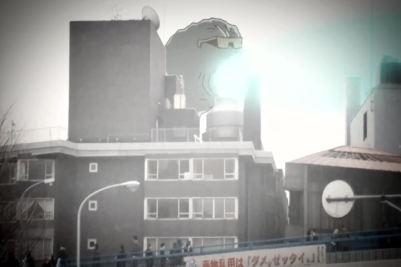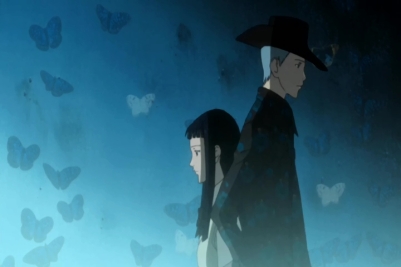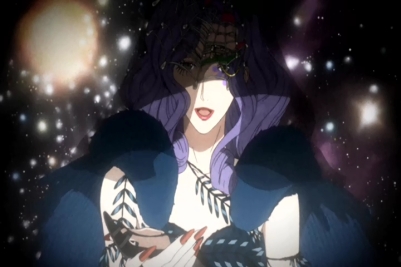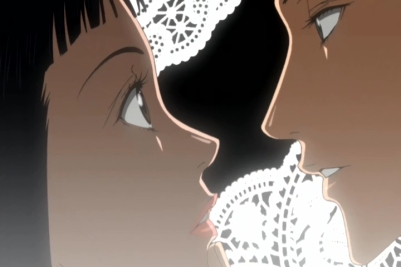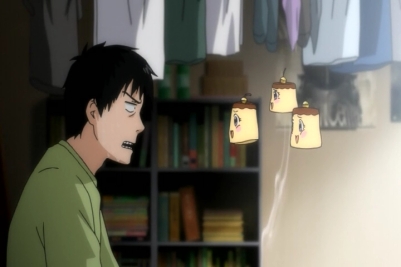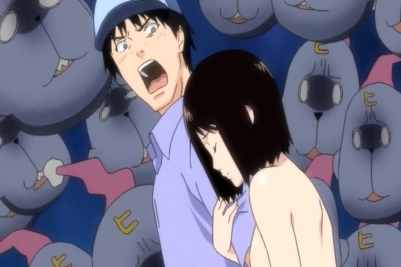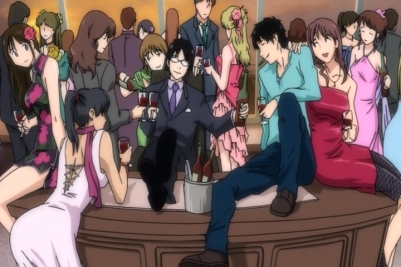Japanese Title: Akira
Similar: Ghost in the Shell
Watched in: Japanese & English
Genre: Science Fiction Action Horror
Length: 2 hr. 4 min. movie
Positives:
- The art, especially the backgrounds.
- World design.
- That thing in the finale.
Negatives:
- Vague research subplot.
- Clumsy dialogue.
(Request an anime for review here.)
There was a time when if you mentioned you were into anime, Akira was one of the first anime others asked if you had seen. Akira, Akira, Akira! It was everywhere. As it happens, I had not seen it until having been into anime for several years. Overhype resulted in a letdown. Then again, no one ever actually told me why they recommended it. Most anime at the time was recommended simply for being anime. We didn’t have a large selection.
In the year 2019, Neo-Tokyo has not yet recovered from the devastation of World War III, where an explosion had torn the city apart. Terrorism and riots are routine. Haneda is the leader of a bike gang, whose job seems to be clashing with a rival gang. One such clash leads Tetsuo, the smallest of the gang, to crash into a child that looks 100-years aged. This child is an esper with devastating psychic ability. Soon, Tetsuo starts to develop powers of his own.
The story is a simple one to follow – a psychic kid runs from the government as his powers develop faster than he can handle. The change in Tetsuo from a little kid who looks up to Haneda with the cool bike into a brat with a god complex is an interesting one, plot-wise. This arc raises the stakes to apocalyptic degrees, so tension isn’t lacking in Akira. Character-wise, it doesn’t give us much. Personality and depth are in short supply, rationed out like food after the war. Everyone in Haneda’s gang combined make up one whole character and the government officials and scientists merely fill the roles given. If Tetsuo were a robot slowly going out of control, there wouldn’t be much difference. Akira is no Ghost in the Shell.
Now the action, that’s more interesting. The destruction caused by the psychic powers looks fantastic thanks to the animation. When every surface crumbles away from Tetsuo, you can feel the invisible force pushing out in all directions. It’s visceral. Each action scene is more intense and crazier than the last, culminating in one of the most famous finales in film. If you haven’t seen it yet, you’re in for something different.
In truth, the art made Akira the famous anime it is today, and made me appreciate it more on further viewings. The parallax scrolling alone is worthy of an award. When you come across a long shot of the city with a character going across the screen, rewind to admire each background layer moving at a different speed, creating that visual depth you rarely see in anime. It’s not just the number of layers, but the attention to detail on each. Surely, Akira must have a ton of AMVs that take advantage of these scenes. I would be surprised to learn otherwise. Even if cyberpunk depresses you or if the premise bores you, give Akira some of your time to appreciate its artistry.
Art – Very High
Every long shot of Neo-Tokyo is a marvel. The depth of field obtained from parallax scrolling deserves praise. The animation is great too, except for the mouths, which are over-animated and don’t sync in any language.
Sound – High
The music and sound design are the notable parts of the audio. The clumsy dialogue doesn’t allow the otherwise good actors to get into the characters. Watch this is Japanese, but if you watch Akira dubbed, go with the 2001 Pioneer version, not the original from the 90s that exemplifies bad dubbing.
Story – Medium
A teen of psychic ability starts to go mad amidst a city in chaos. The straightforward story doesn’t flex its muscles, instead giving us characters with little exploration and a vague sub-plot about research involving the Akira entity.
Overall Quality – High
Recommendation: A must watch for classic anime fans and lovers of art. Akira isn’t worth your time for its story. Instead, stay for the art and the spectacle of it all, the third act in particular.
(Request reviews here. Find out more about the rating system here.)
Awards: (hover over each award to see descriptions; click award for more recipients)
Positive:
Negative: None

